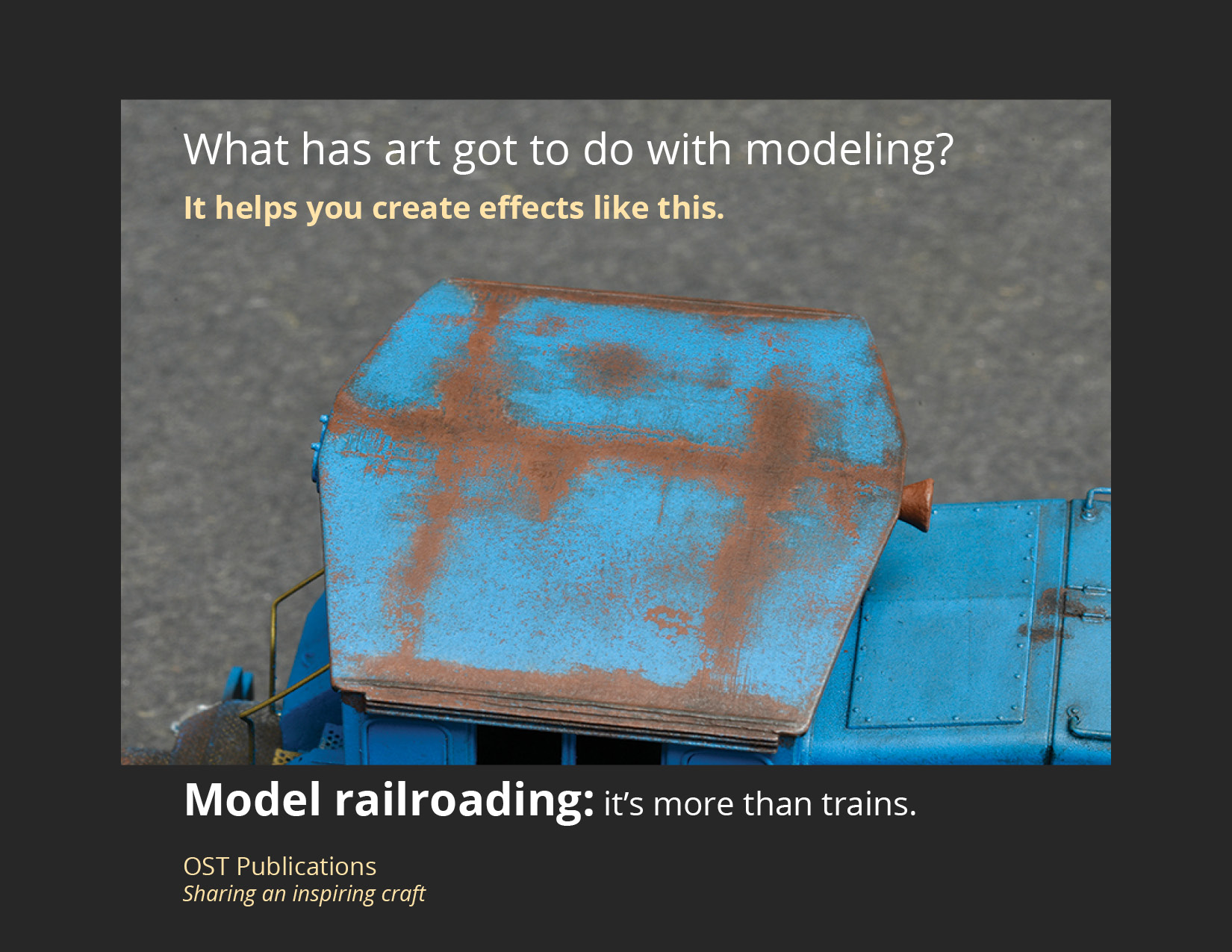
Anybody Know A Shortcut Out Of Here?
Recently my reading material presented a theme of change. Talk of change makes many people nervous. We seek consistency and stability and take comfort in the familiar. I suggest however, model railroading could benefit greatly from changes to the following areas.
A Consistent Narrative
This hobby has so many mixed messages it’s no surprise people aren’t listening. It’s touted as the world’s greatest hobby while every magazine, forum and discussion group offers ways to do it on the cheap and every conceivable shortcut to eliminate the work involved. If it’s all such fun, why do we need shortcuts?
The real message these attitudes convey is this is an expensive and complicated hobby. It can be, especially if you are planning a basement filling super layout. But is that the only path worth pursuing? Of course not, however that’s the unspoken assumption behind every penny-pinching tip and drudgery reducing short cut.
The current narrative is too focused on consumerism. The layout-centric focus erects a huge barrier to anyone who might be interested. Not everyone has a desire to build a big layout or even the need to build one at all. In our bloated abundance, we’ve demonized the joy of doing things. We ignore the power of making choices and embracing constraints with not so subtle suggestions that we’re depriving ourselves if we do. There are many ways to enjoy the work such as model building for its own sake, yet we hear little about them.
Share The True Cost Of A Layout
The petition to abandon the line is approved and with the stroke of a pen, the railroad in these parts is no more. There will be a last run of course, with proper fanfare and memories shared as the old-timers wistfully recall past glories. The line will be cleared of rolling stock and salvage before the scrappers embark on their grim task.
Within a day or two, piles of wood, bags of Styrofoam and plaster along with dangling wires and mangled track, line the walls awaiting their trip to the landfill. Representing years of dedicated work, thousand of dollars and countless man-hours, it’s scrap that no one wants. The basement with the thick roof is for sale and the lifetime layout it lovingly housed isn’t part of the deal.
If you follow Marty McGuirk’s blog, he’s currently living this story and shares candidly how he’s dealing with the pending move and its impact. Of course the layout is coming down with most of it destined for the dumpster. Reflecting on the process and the waste involved gives him pause.
We build these things with the full knowledge they can’t be moved without significant damage or alteration but that doesn’t stop us from building like they will never move an inch. Our reporting tends to gloss over the emotional factors involved in the demolition of a project that consumed years of your life and cost thousands of dollars. Well yes, it had to go but no worries; I’m already planning the next one! We all choose our path, but some of the paths are getting ridiculous.
I’m not suggesting we stop building large layouts but I do suggest we share more of the true cost these things impose on our lives. And those costs go beyond plywood and Styrofoam. They include hours of frustrating indecision about a design process most barely understand. Then there’s the real amount of time these beasts demand. Given increased workloads and family activities, we’re talking years that can easily stretch into decades. What happens when the HR person at work says we need you to takeover the Timbuktu office ASAP. It’s a long-term assignment. Well, bye-bye layout.
Has the hobby genuinely changed with the times or are we clinging to an approach rooted in the era of Leave It To Beaver?
The Human Side Of The Craft
Our reporting has moved away from exploring new ideas that challenge our vision and encourage creativity. Our imaginations are dull from rehashing the same modeling scenarios over and over. Those ideas might have been fresh once but that time has long passed.

This craft is at its best when we push ourselves forward and encourage each other to do better, think deeper and learn from our mistakes. We’re better when we focus on people instead of stuff. What happened to the human side of the craft?
I’m admittedly biased but I believe two of the most important sentences in Tony Sissons’ new book are these:
I always feel that every model I build has a piece of my heart in it somewhere.
This sentence comes straight from his heart and reflects the importance model making has in his life. It’s an emotional statement, something we avoid like the plague, yet it rings true for Tony.
This is not a how-to book but more of how I go about it book; full of the ideas and techniques I apply to my modern diesel models.
The second sentence should sink deep into our hearts. It isn’t dogma about so-called best practices or a declaration there’s only one way to do something. He shares his experience of model building so you can take what you need and make it your own. And, we both want you to make it your own.
Instead of more how-to, I suggest we could dig deeper and share what this craft means to us. How does it fit into your life, what benefit does it bring, how are you better because of it? Such stories would bring the uniqueness we all have to the forefront and reflect the depth this craft offers.
Change is hard, scary, full of uncertainty and uncomfortable. Anything worthwhile usually is. Is the craft worth it? That’s the question we need to ask and answer.
Regards,
Mike
0 Comments